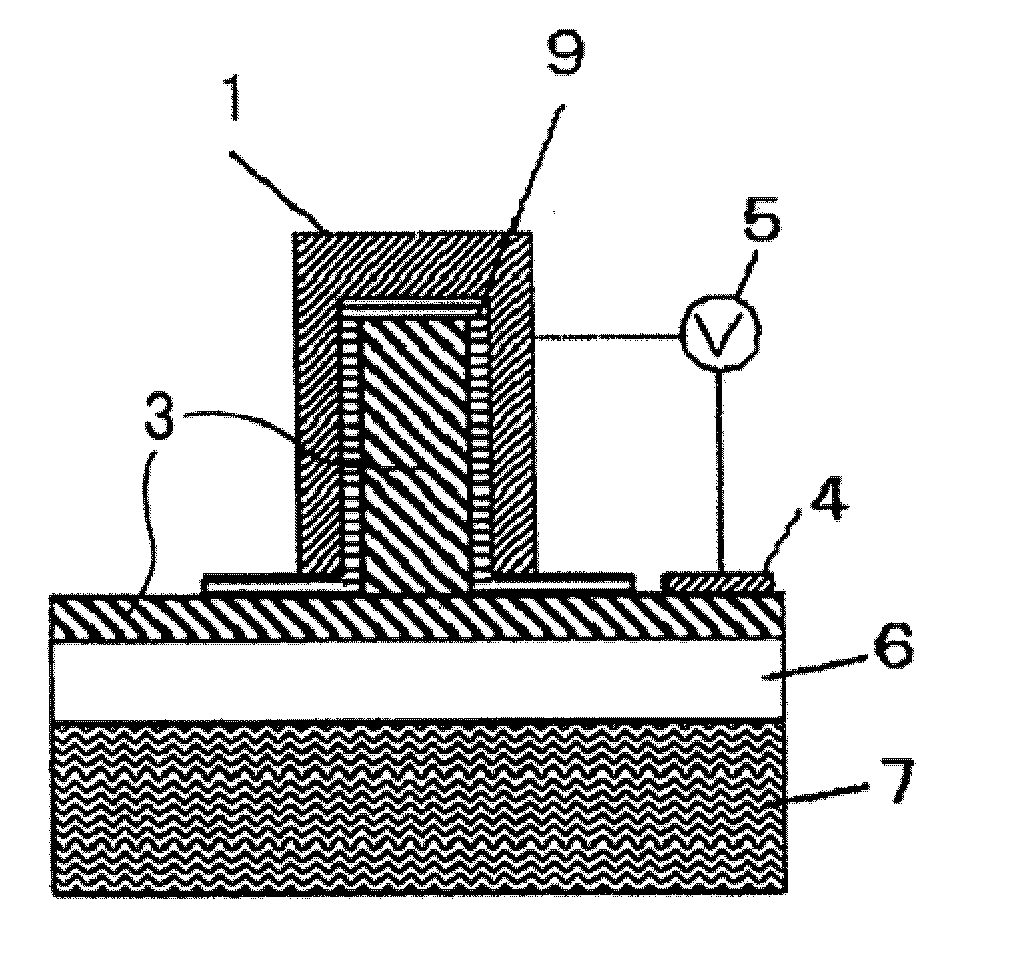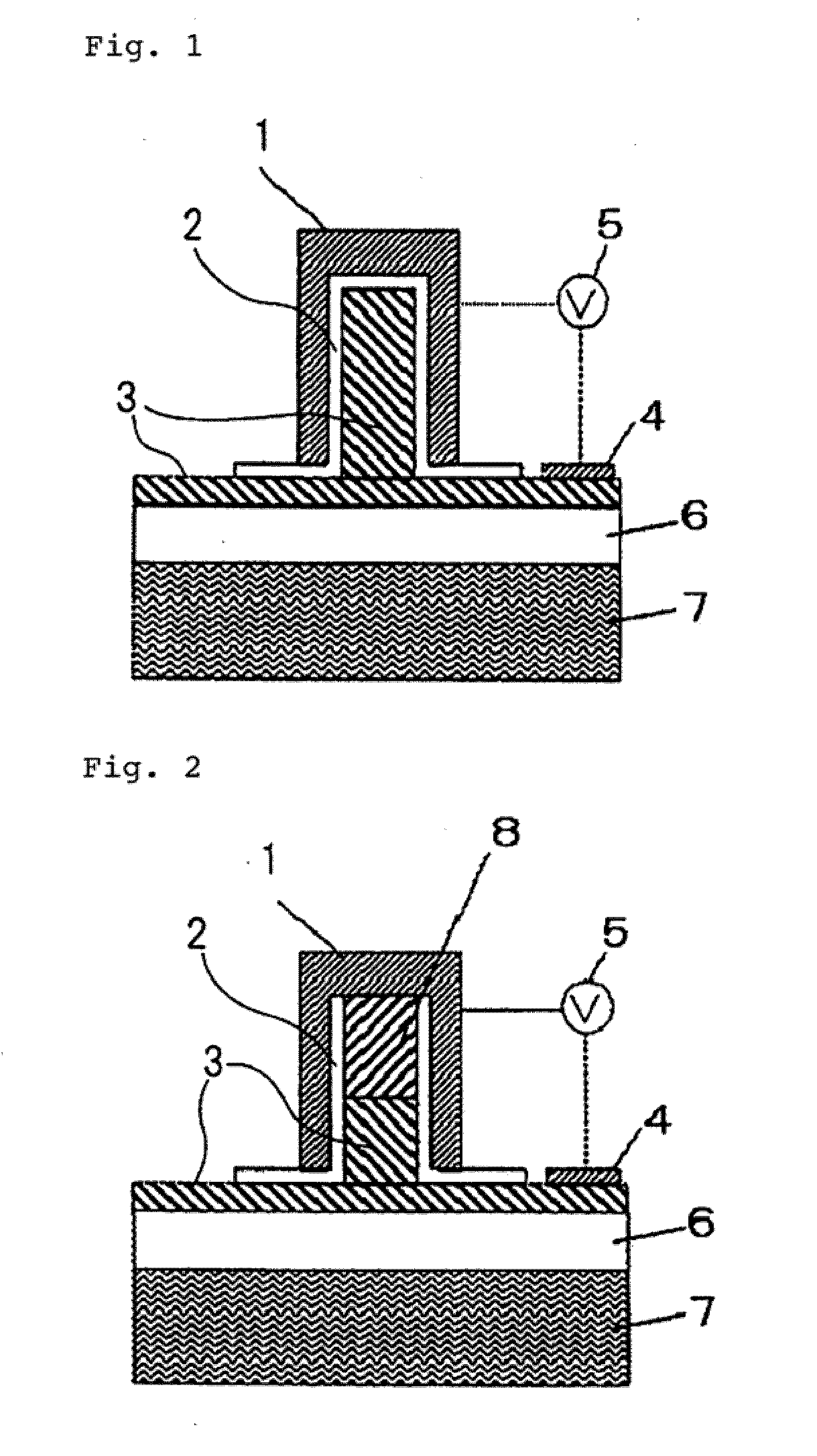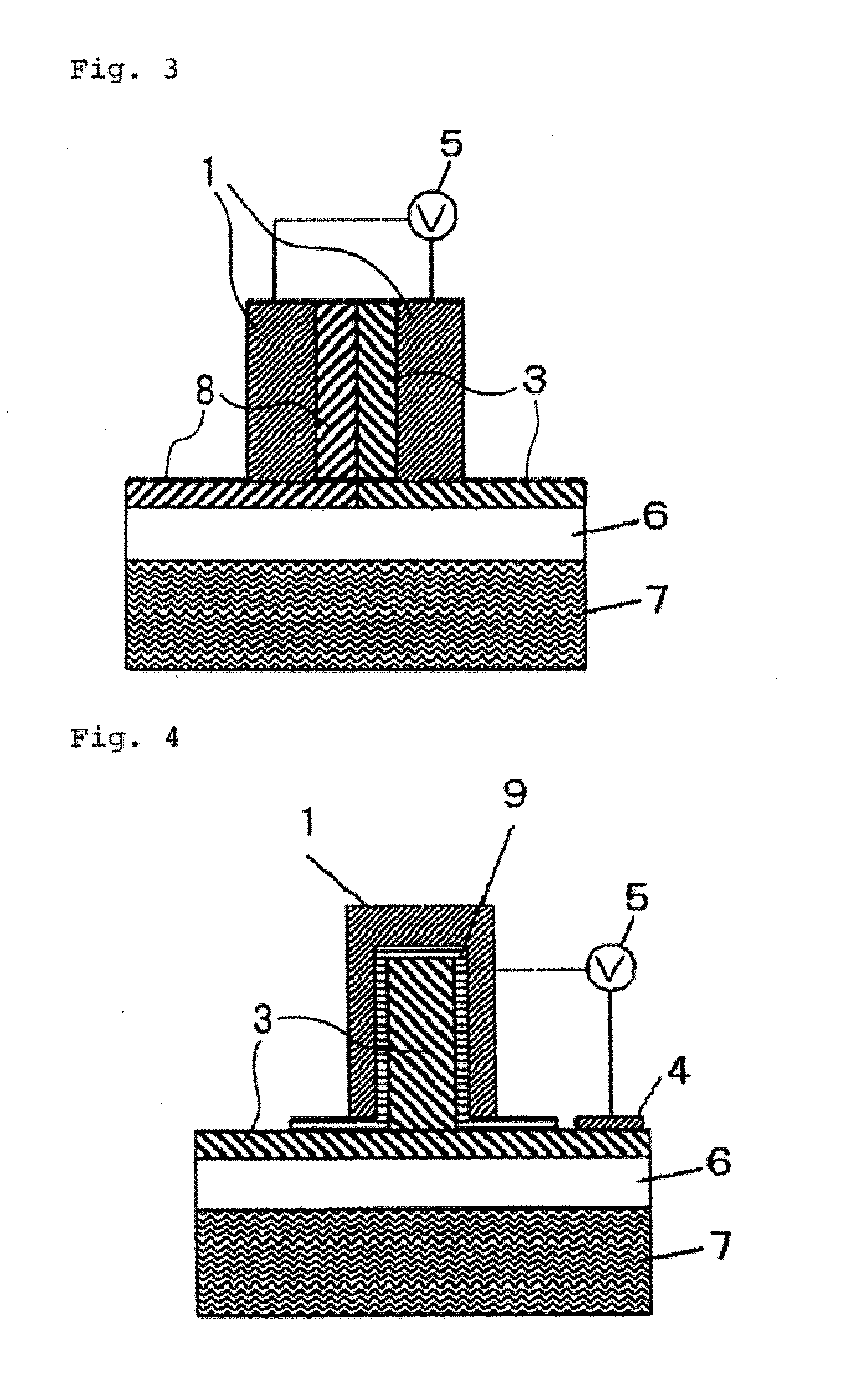Optical phase modulation element and optical modulator using the same
- Summary
- Abstract
- Description
- Claims
- Application Information
AI Technical Summary
Benefits of technology
Problems solved by technology
Method used
Image
Examples
Example
First Embodiment
[0017]FIG. 1 is a cross-sectional view illustrating a Metal Insulator Semiconductor (MIS) type optical phase modulation element according to a first embodiment of the invention, taken in a direction crossing a waveguide direction. In this figure, embedded oxide layer 6 is formed on the principle surface of substrate 7, n-semiconductor 3 is formed on embedded oxide layer 6, and a part of n-semiconductor 3 opposite to substrate 7 is formed as a protrusion extending in one direction. Metal clad 1 is provided on the surface of n-semiconductor 3 including the protrusion, with insulating film 2 sandwiched between metal clad 1 and n-semiconductor 3. This structure is referred to as an MIS capacitor structure. In addition, due to this structure, a Plasmon waveguide is formed, in which the protrusion of n-semiconductor 3 and insulating film 2 act as a waveguide core and metal clad 1 acts as a waveguide clad, so that surface Plasmon polariton is guided in a direction perpendic...
Example
Second Embodiment
[0020]FIG. 2 is a cross-sectional view illustrating a P-N type optical phase modulation element according to a second embodiment of the invention, taken in a direction crossing a waveguide direction. As shown in the figure, this embodiment is different in a semiconductor structure forming a part of waveguide core from the MIS optical phase modulation element of the first embodiment. Specifically, p-semiconductor 8 is stacked on a protrusion of n-semiconductor 3, and metal clad 1 is provided on the protrusion with insulating film 2 sandwiched between metal clad 1 and the protrusion. In addition, the top surface of p-semiconductor 8 is not coated with insulating film 2 but is in close contact with metal clad 1. The other construction is the same as in the first embodiment.
[0021]The modulation element of this construction can modulate the equivalent refractive index of a Plasmon waveguide by changing carrier density when carriers are injected into P-N junction semicond...
Example
Third Embodiment
[0023]FIG. 3 is a cross-sectional view illustrating a P-N type optical phase modulation element according to a third embodiment of the invention, taken in a direction crossing a waveguide direction. As illustrated in the figure, this embodiment is different in a semiconductor structure of a waveguide core and a waveguide clad structure from the previous two embodiments. Specifically, n-semiconductor 3 and p-semiconductor 8 formed on embedded oxide layer 6 along the in-plane direction (i.e., the lateral direction in the figure) make a P-N junction structure. The semiconductor part having this P-N junction forms a protrusion that protrudes in a direction opposite to substrate 7. In addition, two metal clads 1 are disposed with both the right and left sides of the protrusion sandwiched between metal clads 1. Two metal clads 1 have a function as positive-negative electrodes, with one of metal clads 1 in close contact with n-semiconductor 3 and the other metal clad 1 in c...
PUM
 Login to View More
Login to View More Abstract
Description
Claims
Application Information
 Login to View More
Login to View More - R&D
- Intellectual Property
- Life Sciences
- Materials
- Tech Scout
- Unparalleled Data Quality
- Higher Quality Content
- 60% Fewer Hallucinations
Browse by: Latest US Patents, China's latest patents, Technical Efficacy Thesaurus, Application Domain, Technology Topic, Popular Technical Reports.
© 2025 PatSnap. All rights reserved.Legal|Privacy policy|Modern Slavery Act Transparency Statement|Sitemap|About US| Contact US: help@patsnap.com



